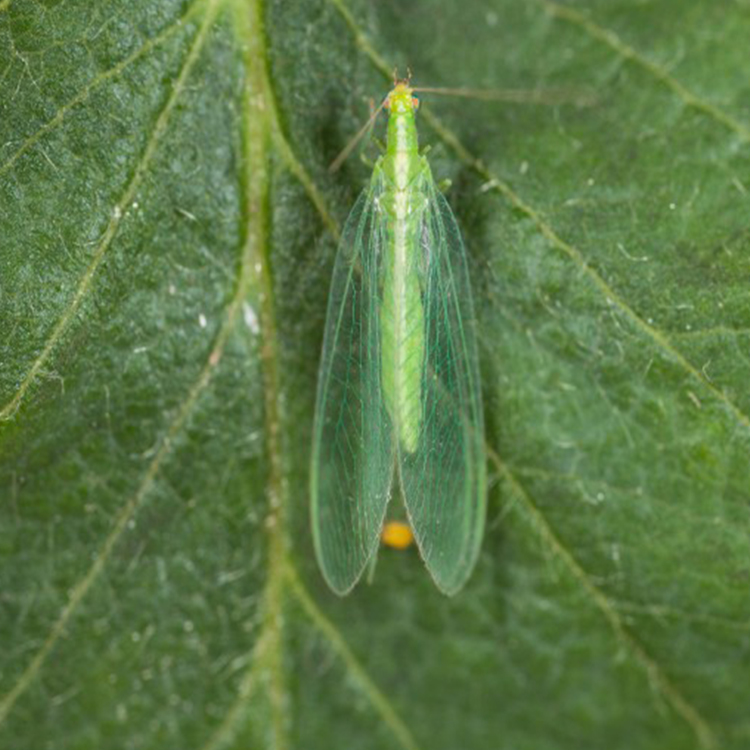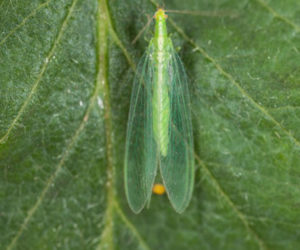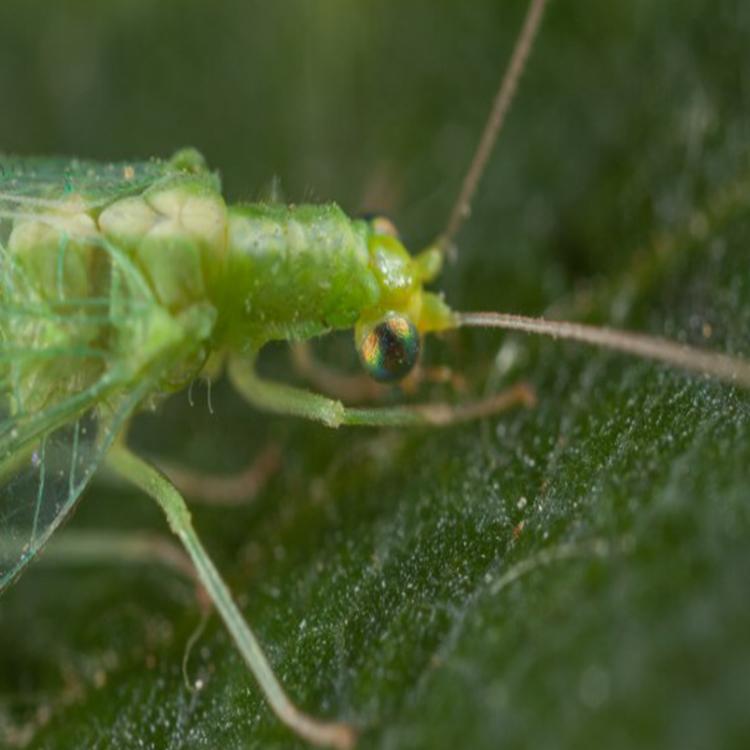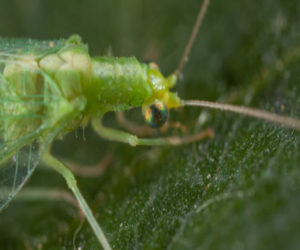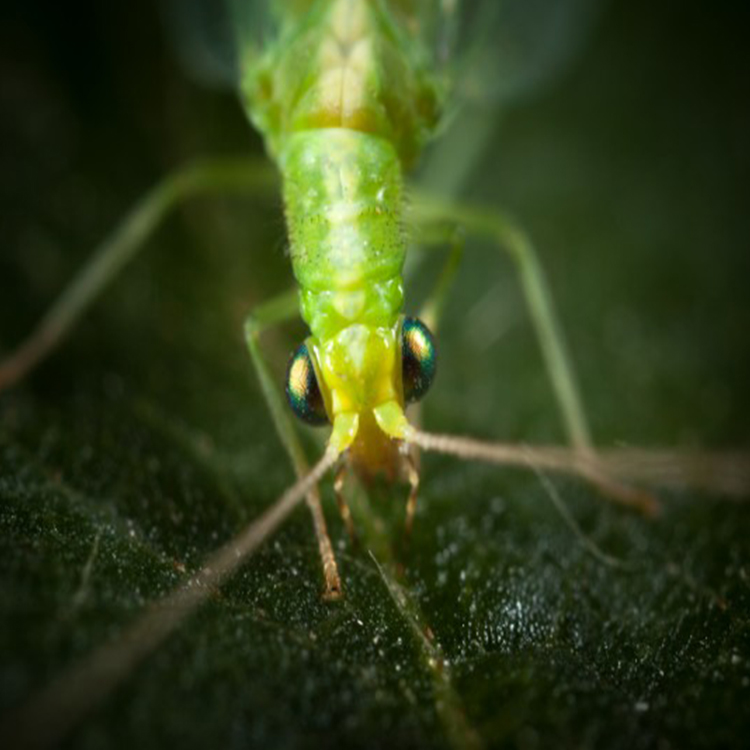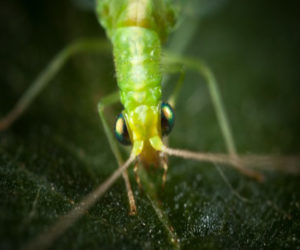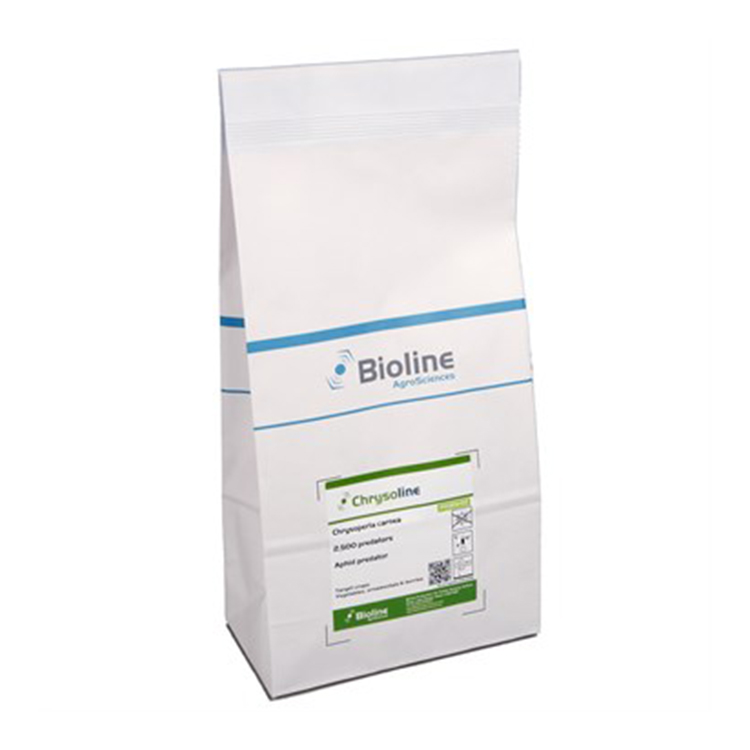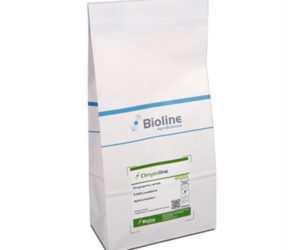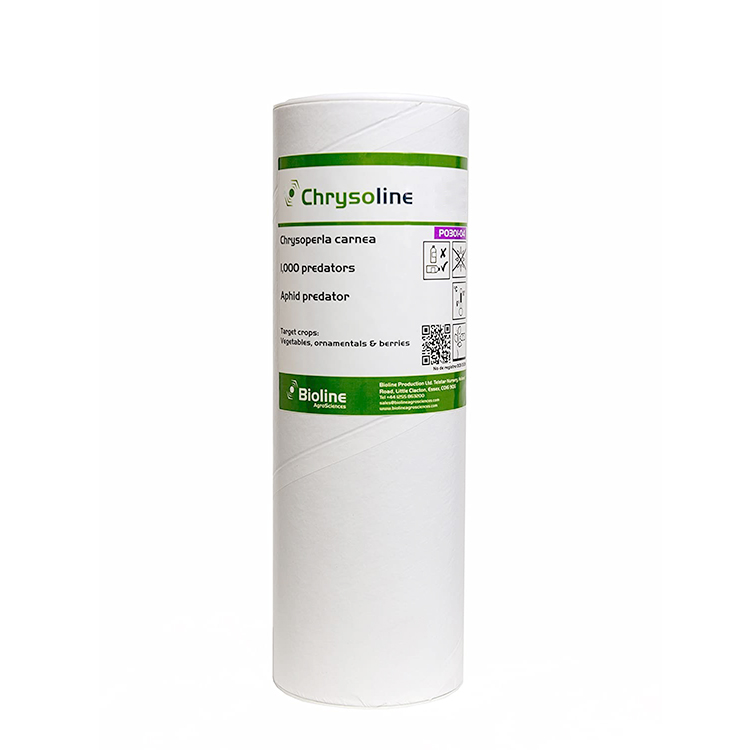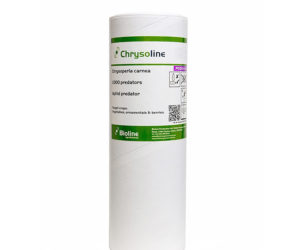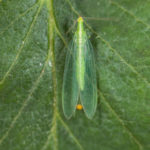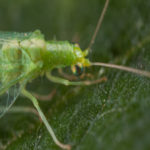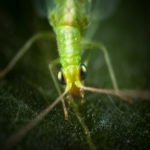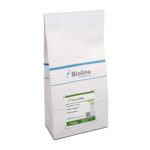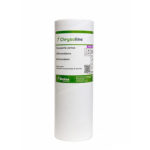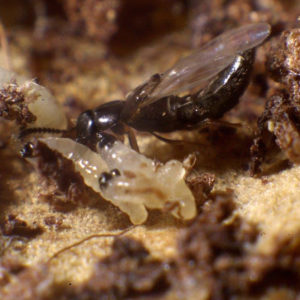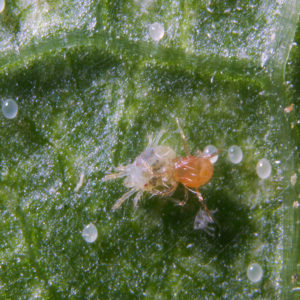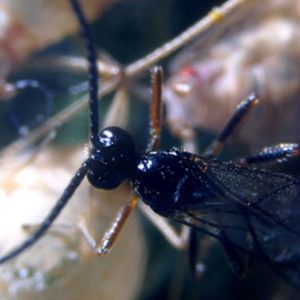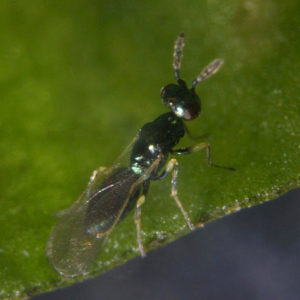Description
![]()
Chrysoline contains the aphid predator Chrysoperla carnea. They are commonly known as Green Lacewings. The larvae are voracious predators of aphids and other small, soft bodied insects. The adults hunt for aphid colonies and lay eggs nearby, then the larva remains in place and feeds on the aphids. This product is recommended for localized releases in hotspots – one larva can consume up to 200 aphids.
Target Crops » Vegetables, Ornamentals & Berries
Target Pest » Aphids and other soft bodied insects
Target Life Stage » Whole life cycle
Delivery Systems » Tubes & Pails
Key Features
- Targets a broad spectrum of aphid pests on different plants, thus reducing the worry of making an incorrect species identification.
- One larva can eat more than 200 aphids.
- Easy to observe and monitor.
- Adults disperse and hunt down aphid colonies. Adult females lay single eggs on long stalks, usually on the underside of leaves. When the larva hatches, it immediately moves down this stalk until it reaches the leaf surface, where it begins to search for prey.
- Ideal for hot spot treatments due to its quick knockdown effect on aphids.
- Larvae need food to survive and complete their larval stages so Chrysoline is not suitable for preventive use.
Target Pests
- Aphids
- Mealy Bugs
How It Works
- The larvae remain in place on aphid colonies and are used as a curative treatment for localized attacks. Once the mandibles have penetrated the prey, lacewing larvae inject enzymes which gradually digest the internal organs of the aphid. When digestion is complete, the liquid body contents are sucked out through the mandibles.
- Adults will disperse, so new releases may be required to maintain control. Tests on aphids show total consumption by a single larva in 14 days at 21°C.
Available delivery systems
- 1L Carboard tube containing 1000 Chrysoperla sp. 2nd instar larvae
- 5 liter bag containing 2,500 Chrysoperla sp. 2nd instar larvae
Handling & Storage
Instructions for use
- Chrysoline is supplied as larvae in a carrier material. On receipt, place the containers in a cool shaded area until ready to use.
- Do not expose to direct sunlight.
- When ready to apply, open the container in the greenhouse.
- Release larvae directly onto identified aphid colonies.
- Make sure that any carrier material remains on the plant initially.
- If it falls to the floor immediately, many of the larvae will be lost.
- NOTE: Larvae are cannibalistic if confined together without food.
- For advice on recommended release rates, consult your technical specialist.
Storage and transport
- Transport and store in darkness at 6-10°C.
- Keep out of direct sunlight.
- Store in a horizontal position.
- Use within 18 hours of receipt.
